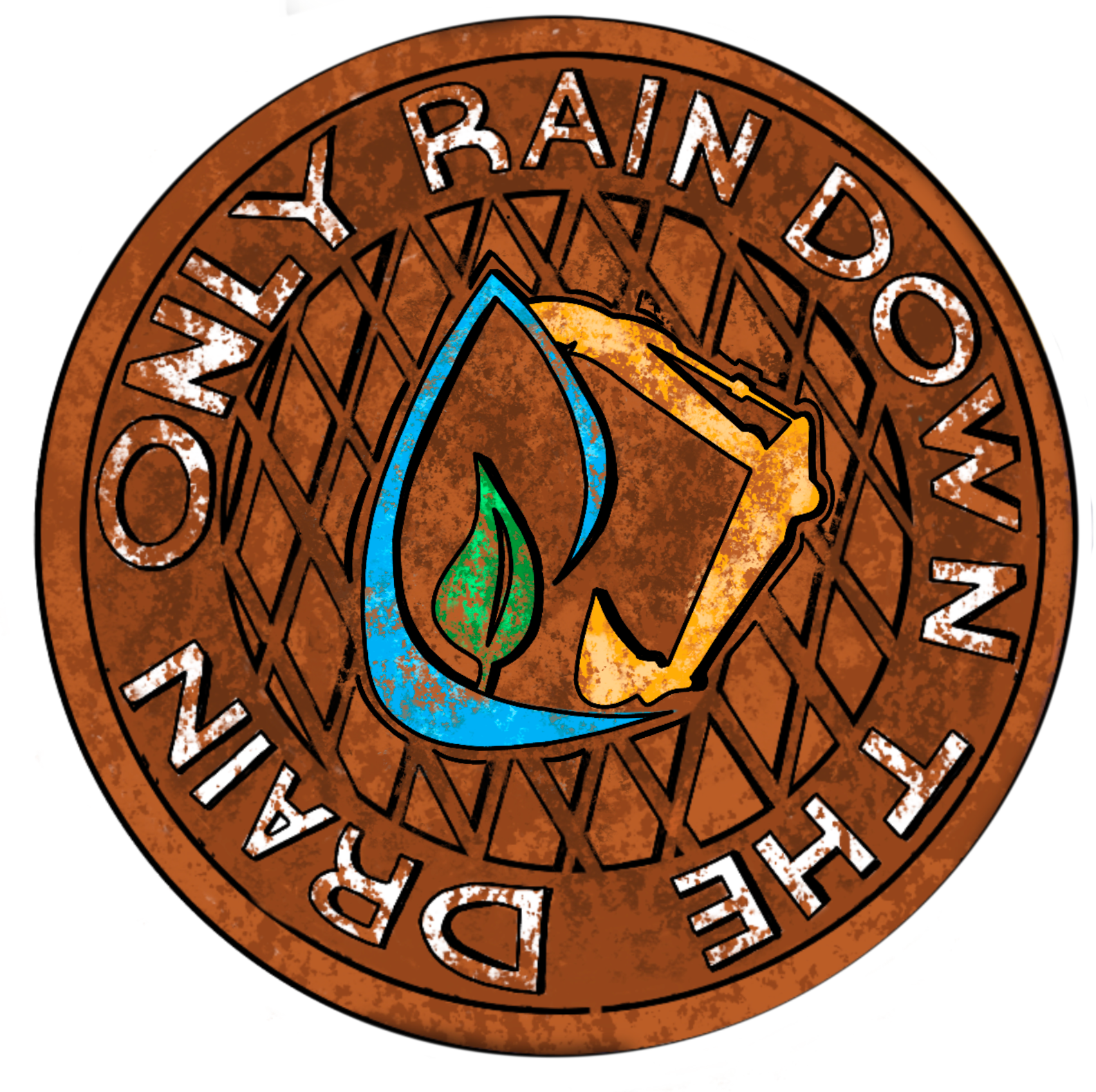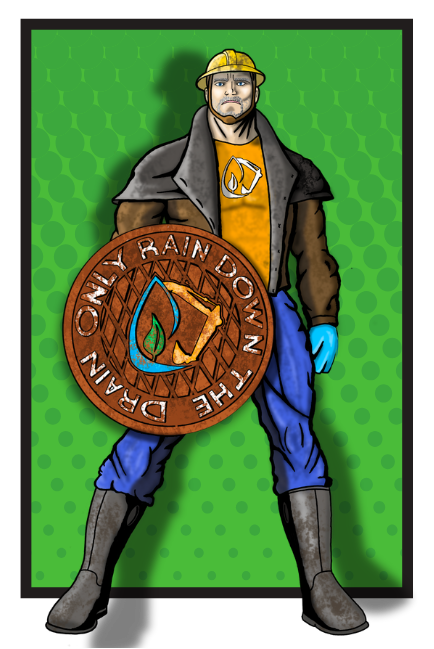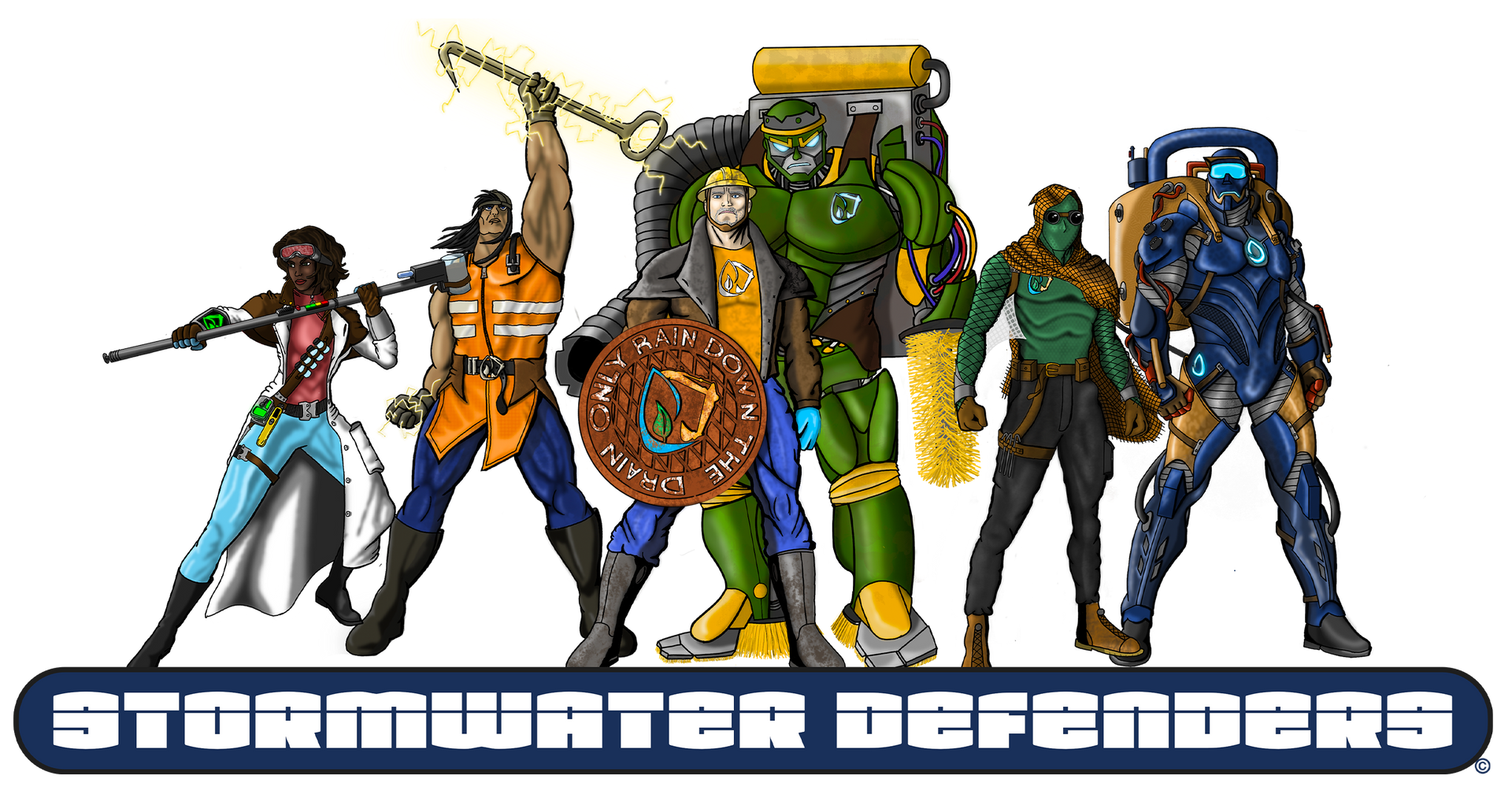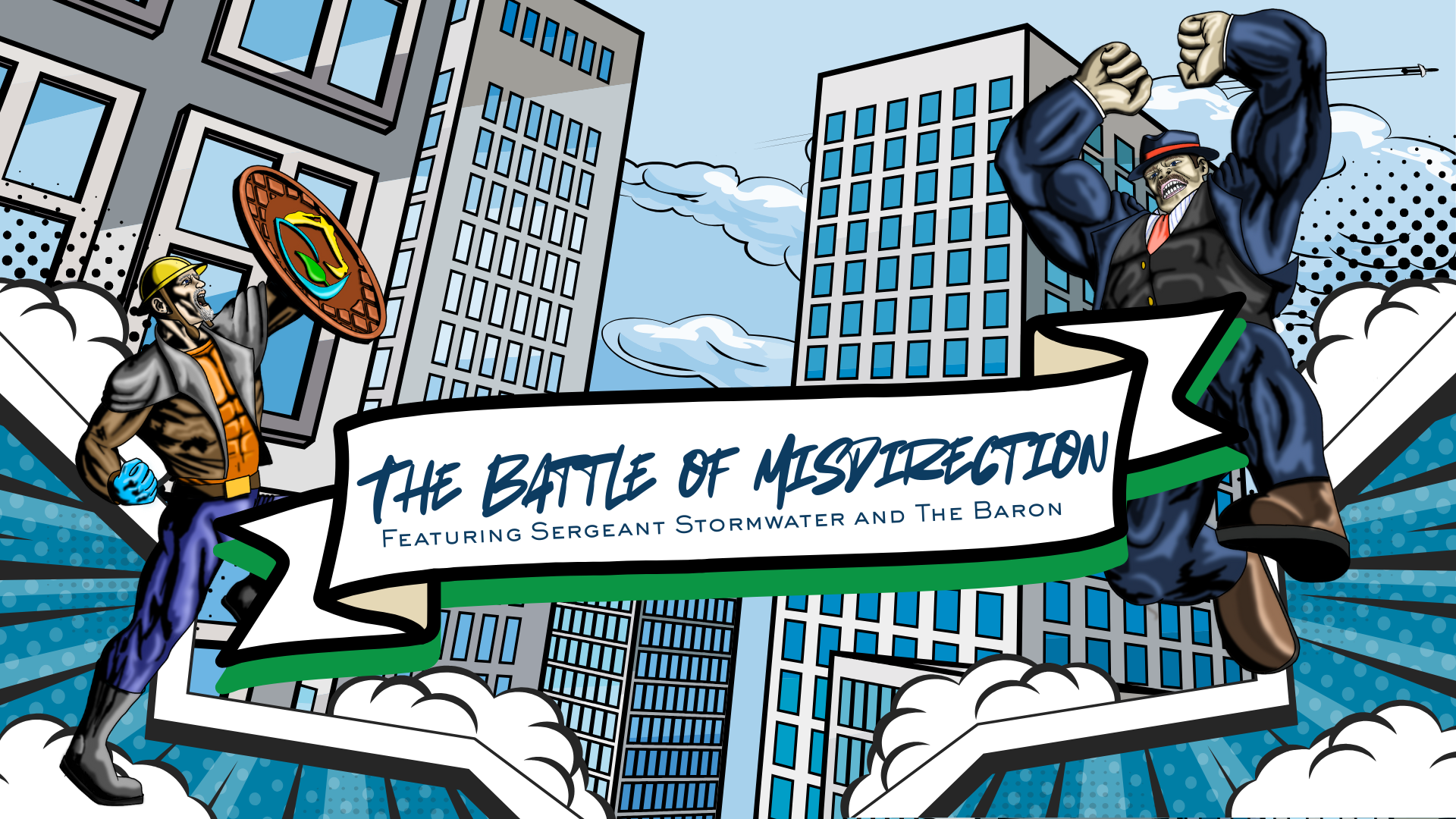
The Battle of Misdirection
Sergeant Stormwater was invited to be the keynote speaker at a national stormwater conference, where he shared his background and how he became a Stormwater Defender. He also recounted some of the challenges certain locations in the U.S. faced while combating the Degraders. One case study he discussed involved a small city in Colorado. This typical rural town had a downtown core with businesses, several restaurants, material suppliers, and several private residential communities. Just outside the city were large agricultural farms, as well as resource companies like a small sand and gravel pit and a lumber mill. The town featured a couple of lakes and creeks that drained into a local reservoir. The area had experienced significant growth due to its beauty, attracting tourists who enjoyed recreating in the reservoir every summer.
Sergeant Stormwater explained how he became involved with the city after local citizens frequently reported issues with the lakes and creeks. The city had seen a decline in water quality within the local watershed, prompting the formation of a team of scientists and neighboring city officials to discuss potential improvements. As Sergeant Stormwater continued his presentation, a hand went up from one of the several hundred people in the audience.
He acknowledged her and asked, “Do you have a question?”
She responded, “Your story resonates with what we are facing. Stormwater pollution is quickly becoming our largest management expense, and frankly, there are not enough people to help with the effort. We’re working with neighboring cities and businesses in our watershed, but we still face significant challenges during rain events. Our resources are limited, and while we’re trying, we really need some help!”
Sergeant Stormwater asked the audience, “How many of you can relate to her situation? Please stand if you feel the same way.” To his surprise, over half the attendees stood up.
“Alright, here’s what we’re going to do. For those of you standing, please give your contact information to Super Sampler in the back of the room. We’ll collect your details and add them to our CitizenStormScience GIS map. We’ll create watershed focus groups and may ask for data from the past five years. Together, we’ll develop a plan to keep 'Only Rain Down the Drain.'”
The audience applauded loudly, and Sarge was happy to hear the excited chatter among the audience as they filed back out into the exhibit area to see the different BMP suppliers and other sessions on many stormwater and environmental topics at the conference.
Weeks Later, Back at Headquarters, after all the information was input into the CitizenStormScience database, the team gathered to discuss how to proceed.
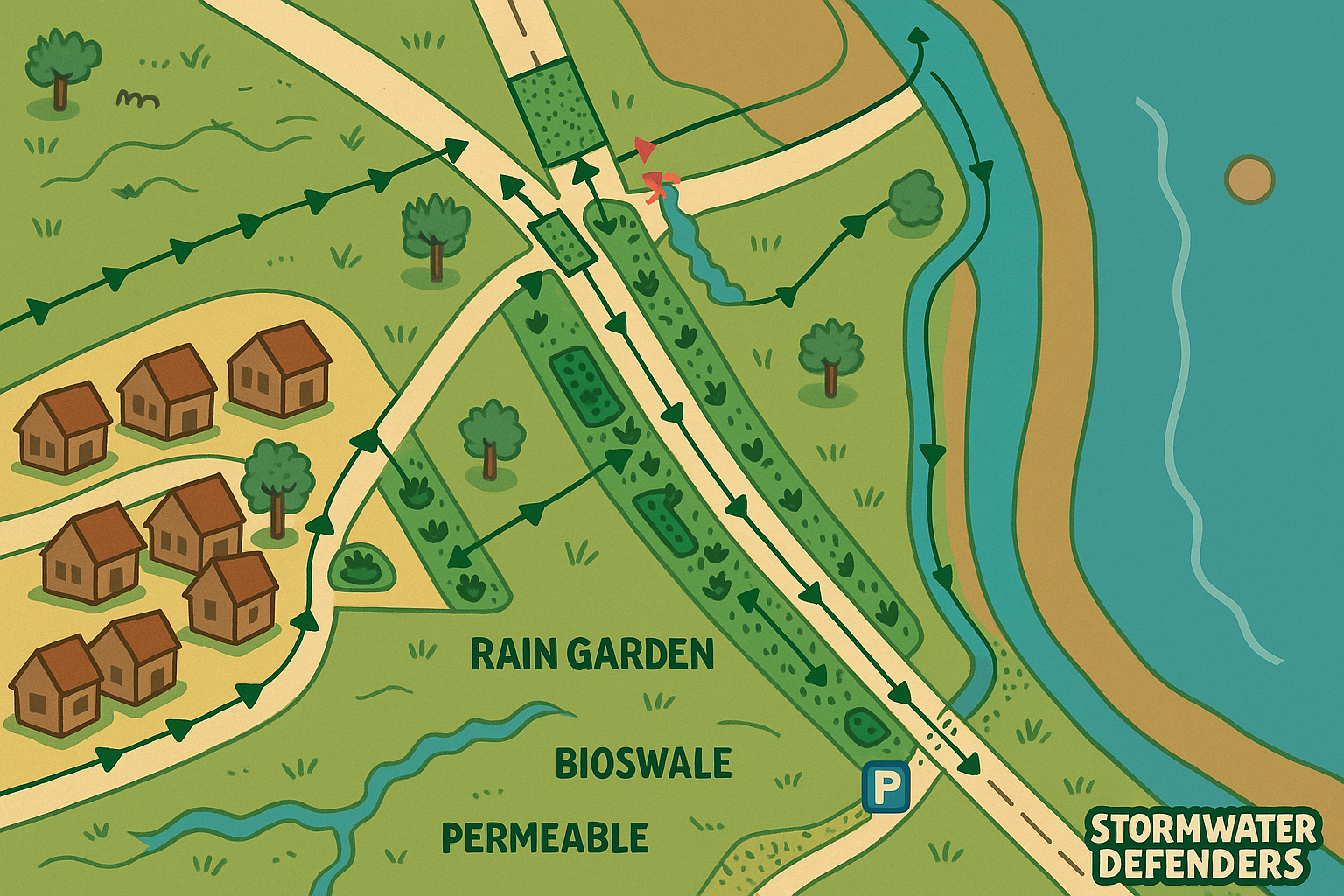
“We know this is going to be a challenging task,” Sergeant Stormwater began. “Stormwater behaves differently across climates and soil types, but we need to identify the common challenges. What are the sources of water quality degradation? What’s working, and what’s not?”
He turned to Teresa and Ben. “Let’s analyze the data collected from the cities in their annual reports to look for common themes. Jason, Vax, and Spectro, you’ll need to visit these locations to get eyes on the ground.”

Several weeks passed, and while the Defenders were educating local citizens, and watershed groups were meeting, no significant improvements had been made to the stormwater discharges. Teresa called Ben and Sergeant Stormwater over to her computer screen.
“I’ve been reviewing the annual reports and IDDE calls from these cities. First, these cities don’t have infrastructure to support a local or regional decant facility, so they haul all the waste from street sweeping and vacuum trucks to a location called ‘Waste Central.’ Next, I looked at the enforcement actions from IDDE reports. Many of these reports focus on local businesses in the urban centers, and I found something interesting. Many of the most prominent businesses in these cities are owned by Bartoxion, Inc., a company that owns restaurants, manufacturing companies, retail centers, and even natural resource companies like mining and timber operations in the same area.”
“Great work,” said Sergeant Stormwater. “Get the information on all Bartoxion-owned companies and send it to the team for site investigations. Ben, I need you to check out Waste Central and see how they handle stormwater waste. We’re going to get to the bottom of this!”
Sergeant Stormwater walked out of headquarters, determined to track down his suspicions.
Reports on Bartoxion-Owned Businesses Begin Rolling In.
“Sergeant, Vax here. The businesses I’m visiting don’t have dumpster services, but yet they all have containers outside from Waste Central!”
“I’ve seen the same thing,” said TARP. “And I don’t see any BMPs on these sites either.”

“Go inside the businesses,” Sergeant Stormwater instructed. “Look for stormwater pollution or spill prevention plans.” As the team continued their investigations, reports came in.
“There are no stormwater or spill prevention plans,” said Spectro. “But I’ve found posters on the walls advising employees to dump waste like fats, oils, and grease into the Waste Central containers. I also found several shop floor drains, which I am told, are connected to the sanitary sewer. Employees were told these go to the treatment plant.”
“I’ve heard the same thing from the businesses,” added TARP.
Super Sampler’s voice crackled over the comms. “Everyone, Vax just moved a Waste Central container and found a direct injection pipe leading straight to the groundwater. Report back if your locations have the same issue!”
“I’m at one of Waste Central’s decant facilities,” reported Chito-Man. “The waste liquids go to a drain, and I followed it— it ends in the city’s aquifer without any treatment. The solids removed from the storm system are just piled up, uncovered, behind some trees near the creek.”
The team continued to confirm that none of the Bartoxion companies had interior drains that were connected to the sewer system. All the Waste Central containers were empty but had drains at the bottom over a gravel area or pipe that went into the ground. None of the businesses had any type of pollution prevention plans or sanitary permits in place and employees were working off of directions provided by the company leadership on how to dispose of wastes.
All of their mobile devices beeped at once. “Everyone, mobilize to the location I just sent you,” Sergeant Stormwater commanded. “I’ve found Bartoxion, Inc.'s headquarters!”
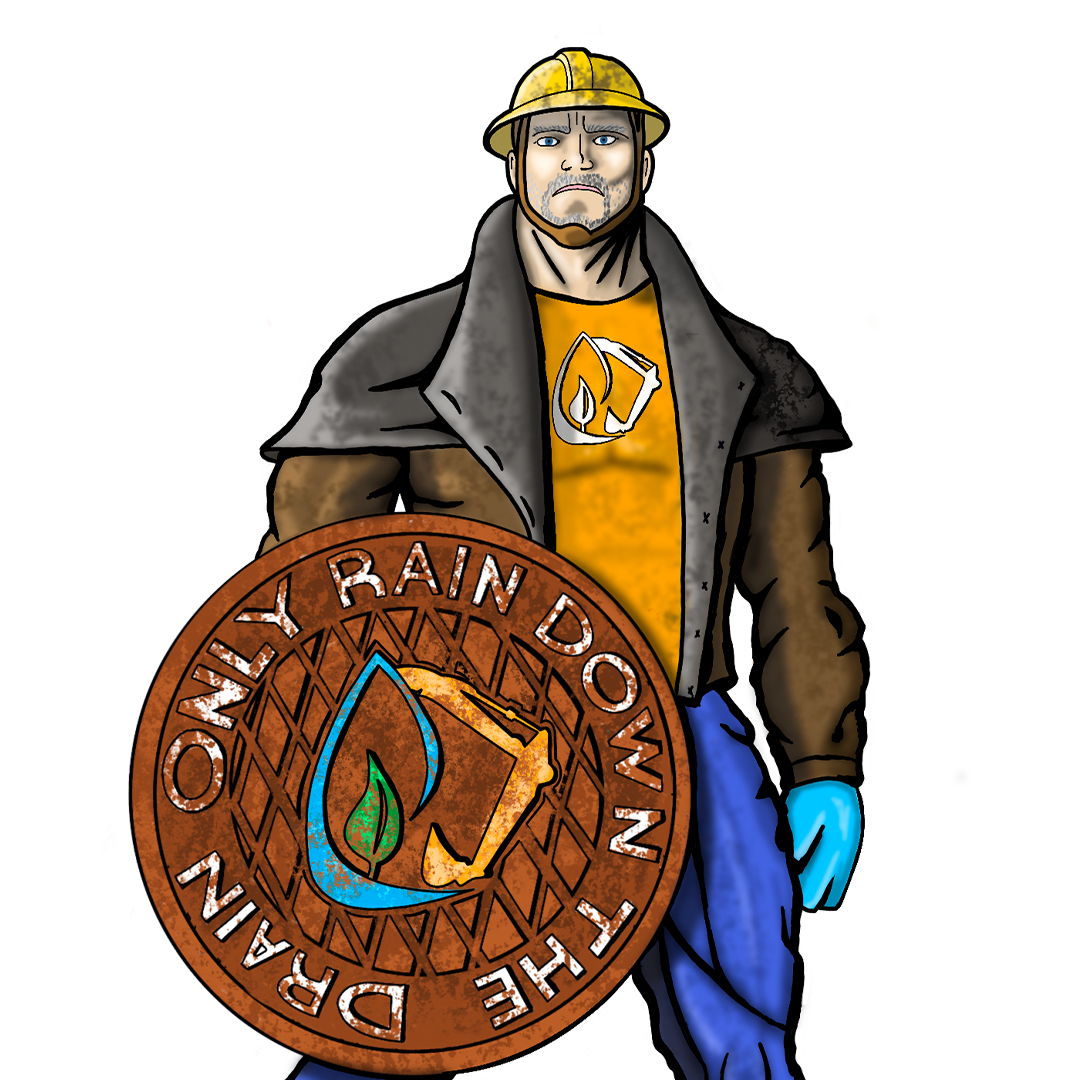
The Stormwater Defenders arrived at an abandoned warehouse in Kentucky. From a hidden vantage point, Sergeant Stormwater began to explain.
“The common thread in all these cities is the misinformation and illegal dumping facilitated by Bartoxion-owned companies. Through careful investigation, I discovered that Waste Central is also owned by Bartoxion. This is part of a larger scheme by ‘The Baron’ to avoid stormwater permits, evade municipal fees, and sidestep proper waste handling services. I believe he’s collaborating with the other Degraders to replicate this plan across the U.S.”
“Vax,” Sergeant Stormwater continued, “run your heat scanner through the building.” Vax replied: “I’m picking up four heat signatures, and my Scattershot alarm is going off!”
“Alright, everyone, surround the building. Let’s clean them up!” Sergeant Stormwater ordered.

The Stormwater Defenders closed in on the warehouse, but the Degraders had prepared an escape plan. As pollutants began spilling out of the building, the Defenders scrambled to stop the flood of contamination from reaching the storm system. In the chaos, the Degraders made their escape.
Once the pollution was contained and cleanup crews arrived, the Defenders began gathering intelligence from a control center within the warehouse. It was filled with computers, whiteboards, and a large map of the U.S. On the whiteboard was a chilling message: “What you don’t know may kill you, but it doesn’t matter to me!”
They found fliers filled with misinformation being distributed to local communities, and training materials used for employees at Bartoxion-owned businesses. Many businesses had licenses with incorrect industrial classification codes in order to avoid permit fees and the need for stormwater pollution prevention plans. The map outlined locations where the Degraders were setting up businesses and Waste Central decant facilities, enabling them to illegally dump waste directly into groundwater or bodies of water.
“This is The Baron’s modus operandi,” Sergeant Stormwater explained. “He’s using misinformation and illegal waste disposal to avoid managing stormwater and waste. It’s a plan to exploit other Degraders’ nefarious activities for his selfish purposes. We need to work with regulatory agencies to prevent Bartoxion from opening any more businesses and ensure the current ones are placed under new management to implement BMPs and protect both stormwater and drinking water supplies.”
Sergeant Stormwater paused, looking around at his team. “People don’t realize how interconnected our water resources are. These cities need to work together to ensure the health of all their water systems and create a sustainable future for our children. Are you with me?”
The Defenders responded in unison, “Only Rain Down the Drain!”

Want to join the fight against pollution?
Download the coloring page of this scene and create your own version of a cleaner, healthier city!
As you color, think about what you can do to protect the storm drains in your community. Draw what BMPs you would use to help keep the waters clean.
Download The Defenders Pledge and continue to fight the good fight for clean water!
Together, we can all be Stormwater Defenders!
Post your colored scene on the Stormwater Defenders Facebook and comment about how you can help protect lakes and streams in your community!
#stormwaterdefenders

